Topics in detail
Introduction to biocybernetics
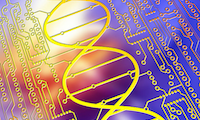 Definition of systems. Comparison of natural and artificial systems.
Applicability of systems theory and engineering in biology. Components of biological systems.
Biological time series. Modelling biological phenomena.
Definition of systems. Comparison of natural and artificial systems.
Applicability of systems theory and engineering in biology. Components of biological systems.
Biological time series. Modelling biological phenomena.
Supporting material
: CoCalc Primer (PDF), Python primer (PDF).First-order kinetics
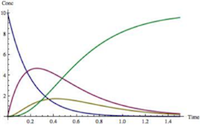 Stock-and-flow model of inflation. First-order chemical reactions and reaction networks.
Systems of linear ordinary differential equations. Solving linear ODE systems by finding
the eigenvalues and eigenvectors of the coefficient matrix.
Qualitative behaviour of linear systems.
Stock-and-flow model of inflation. First-order chemical reactions and reaction networks.
Systems of linear ordinary differential equations. Solving linear ODE systems by finding
the eigenvalues and eigenvectors of the coefficient matrix.
Qualitative behaviour of linear systems.
Supporting material
: Linear algebra with CoCalc (PDF), Solving differential equations with CoCalc (PDF).Biochemical kinetics
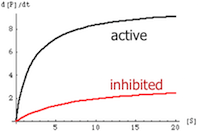 Bulk-phase mass action kinetics. Reversible reactions, equilibrium. Isomerisation catalysis.
Enzyme kinetics models: steady-state approximation, Michaelis-Menten rate equation.
Competitive and noncompetitive inhibition.
Bulk-phase mass action kinetics. Reversible reactions, equilibrium. Isomerisation catalysis.
Enzyme kinetics models: steady-state approximation, Michaelis-Menten rate equation.
Competitive and noncompetitive inhibition.
Principles of genomic regulation
 The molecules of life: DNA, RNAs, proteins. The "central dogma": transcription and translation.
The differences between prokaryotic and eukaryotic organisms.
The molecules of life: DNA, RNAs, proteins. The "central dogma": transcription and translation.
The differences between prokaryotic and eukaryotic organisms.
Prokaryotic genome regulation: the E. coli lac operon, the lambda phage bistable switch, the "Repressilator" synthetic genetic network.
Eukaryotic genome organisation: chromosome structure, splicing, epigenetic regulation. The self-regulatory Hes1 network.
Oscillations and chaos
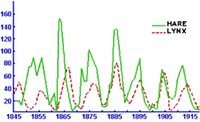 Periodic phenomena in living systems. The Byelousov-Zhabotinsky chemical oscillator.
Biological examples of oscillatory phenomena: glycolysis, mitotic oscillations,
predator-prey interactions (Lotka-Volterra models).
Periodic phenomena in living systems. The Byelousov-Zhabotinsky chemical oscillator.
Biological examples of oscillatory phenomena: glycolysis, mitotic oscillations,
predator-prey interactions (Lotka-Volterra models).
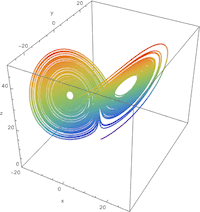 Chaotic dynamics. The
Lorenz attractor and the
logistic map.
Chaos in enzyme-catalysed reactions.
Qualitative behaviour of nonlinear differential equations, the linearisation approach.
Detecting chaotic behaviour with Lyapunov exponents.
Chaotic dynamics. The
Lorenz attractor and the
logistic map.
Chaos in enzyme-catalysed reactions.
Qualitative behaviour of nonlinear differential equations, the linearisation approach.
Detecting chaotic behaviour with Lyapunov exponents.
Stochastic biochemical kinetics
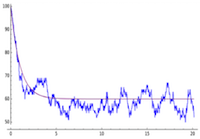 Basic probability theory.
Rolling dice in software.
Bayes' Rule. Principles of stochastic kinetics.
Master equation approach, the Gillespie stochastic simulation algorithm.
Properties of Markov chains. "Convergence" of stochastic kinetic trajectories to
the bulk kinetics model in the limit of very large number of molecules.
Basic probability theory.
Rolling dice in software.
Bayes' Rule. Principles of stochastic kinetics.
Master equation approach, the Gillespie stochastic simulation algorithm.
Properties of Markov chains. "Convergence" of stochastic kinetic trajectories to
the bulk kinetics model in the limit of very large number of molecules.
Systems modelling
 How to construct mechanistic hypotheses from observations. Popper's falsifiability theory.
Kinetic indistinguishability. System analysis by structural or parameter perturbation.
Robustness of genetic networks. Self-regulation in biochemical networks: metabolic control
theory, flux balance analysis.
How to construct mechanistic hypotheses from observations. Popper's falsifiability theory.
Kinetic indistinguishability. System analysis by structural or parameter perturbation.
Robustness of genetic networks. Self-regulation in biochemical networks: metabolic control
theory, flux balance analysis.
The theory of evolution
 Fundamental concepts. Lamarckian and Darwinian
evolution. Evolution of macromolecular sequences, molecular phylogeny.
Epigenetic inheritance.
Fundamental concepts. Lamarckian and Darwinian
evolution. Evolution of macromolecular sequences, molecular phylogeny.
Epigenetic inheritance.
Genetic algorithms
 Genetic algorithm
optimisation techniques. Genetic programming, symbolic regression.
Genetic algorithm
optimisation techniques. Genetic programming, symbolic regression.
Computing with biomolecules
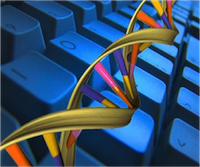 Quasi-digital approaches: Adleman's DNA-based solution of the travelling salesman
problem and related efforts. Molecular implementations of Boolean logic
gates. Computing with enzymatic reaction networks. Simple learning
phenomena.
Quasi-digital approaches: Adleman's DNA-based solution of the travelling salesman
problem and related efforts. Molecular implementations of Boolean logic
gates. Computing with enzymatic reaction networks. Simple learning
phenomena.
Fourier analysis
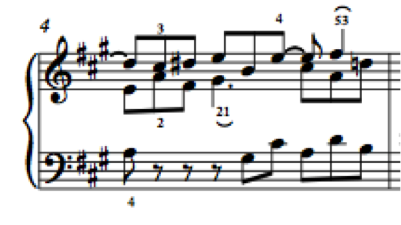 Scalar product of functions. Orthogonal decomposition.
Polynomial and trigonometric bases.
The Fourier series and the Fourier transform.
Signal processing in the inner ear.
Solving differential equations with the Fourier transformation.
Power spectral density, Wiener-Khinchin theorem.
Rate constants from noise in chemical equilibrium: the Feher-Weissman method.
Scalar product of functions. Orthogonal decomposition.
Polynomial and trigonometric bases.
The Fourier series and the Fourier transform.
Signal processing in the inner ear.
Solving differential equations with the Fourier transformation.
Power spectral density, Wiener-Khinchin theorem.
Rate constants from noise in chemical equilibrium: the Feher-Weissman method.
Regulation in spacetime
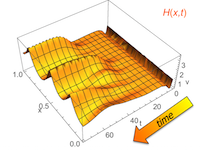 Algorithmic models of
plant growth, applications in computer graphics.
Turing's theory of morphogenesis.
Modelling reaction-diffusion networks with partial differential equations.
Solving the diffusion equation with Fourier transformation techniques.
The Gierer-Meinhardt model
of pattern formation in Dictyostelium discoideum.
Robustness of pattern formation in living systems.
Algorithmic models of
plant growth, applications in computer graphics.
Turing's theory of morphogenesis.
Modelling reaction-diffusion networks with partial differential equations.
Solving the diffusion equation with Fourier transformation techniques.
The Gierer-Meinhardt model
of pattern formation in Dictyostelium discoideum.
Robustness of pattern formation in living systems.
Artificial life
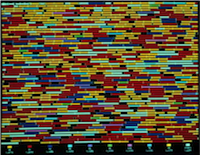 Chemoton theory: self-reproducing
autocatalytic reaction networks. Cellular automata, Conway's "The Game
of Life". In silico models of simulated evolution:
the Tierra
and Avida
systems.
Chemoton theory: self-reproducing
autocatalytic reaction networks. Cellular automata, Conway's "The Game
of Life". In silico models of simulated evolution:
the Tierra
and Avida
systems.